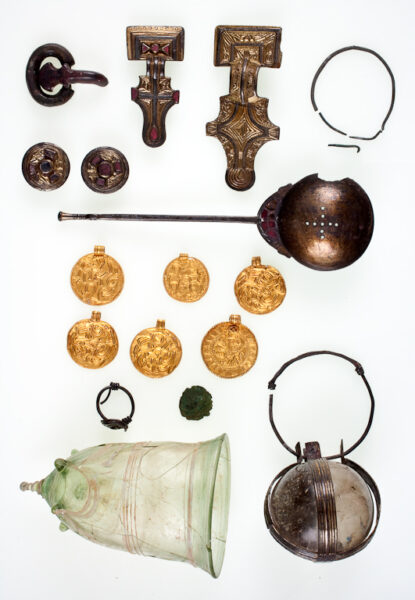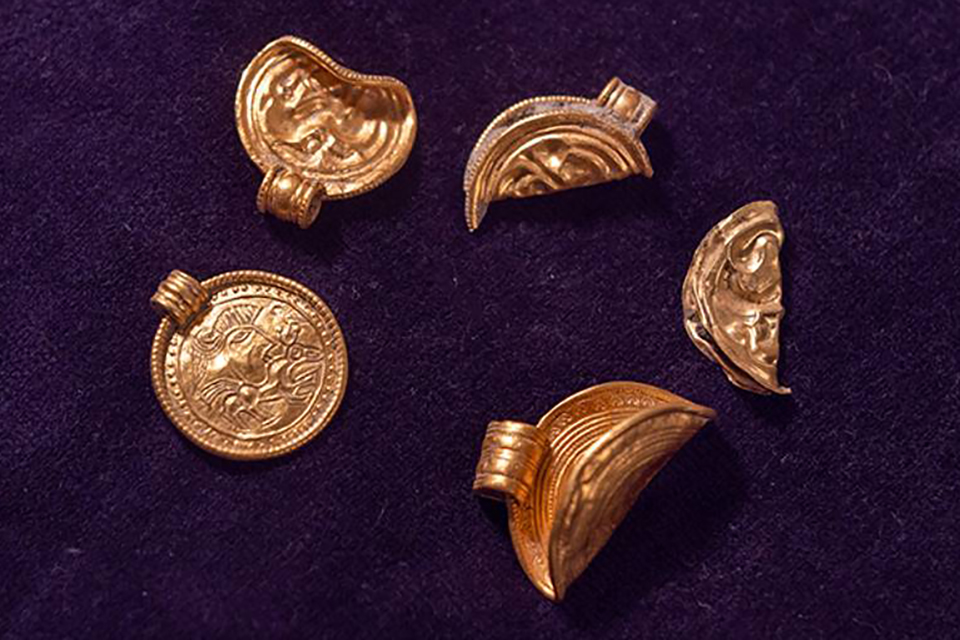Bracteates were thin golden sheets stamped with North West Germanic motifs. A recent overview shows how they were included in various rituals in Northwestern Europe ca. 400-600.
Rituals and Language of Power. Migration Period bracteates and their Deposition as Grave goods
By Axel Hansen
In Lund Archaeological Review (2020-21) Vol 26-27
OPEN ACCESS

A Migration Period bracteate (from the Latin bractea meaning “metal sheet”) is a thin disc with a central motif added with a stamp. While some bracteates only show a central motif, most are surrounded by a border of geometrical patterns and a decorated outer rim. Whether bordered or not, the motif is always small, measuring only a few centimetres. As opposed to this, the border can range from a millimetre to being much wider. The largest bracteate ever found measured 13 cm. Bracteates also have a loop, turning it into a coin-like pendant. They are almost always made of gold. More than a thousand types dated to the Migration Period have been found.
Migration Period bracteates have been found throughout Germanic Europe. While most were placed in so-called hoards – primarily in Denmark, Northern Germany and Sweden – a significant number were also deposited in graves in wider Germanic Europe (including Norway). As grave goods, bracteates were generally deposited in ways suggesting a symbolic display of status, gender and identity both before and after death. Also, these displays show several distinct geographical differences regarding how bracteates were deposited and with whom. Finally, some show signs of wear, while others appear to have been crafted specifically for a single ritual purpose.
Most grave finds outside Scandinavia consist of female inhumations with bracteates worn as part of necklaces, while graves in Scandinavia present a greater contextual diversity. Such practices display bracteates as tokens of wealth and prestige, but with different ideas on how wealth and prestige should be displayed.
Since the deposition itself was of symbolic value, the author concludes that bracteates were multifunctional tools for contemporary elites, used to express influence and ideas in this life and the next.
The article offers a welcome overview of the context in which bracteates have been found.
FEATURED PHOTO:
Five golden Bracteates from the Migration Period found at Råde in Østfold.
Østfold Fylkesmuseum/Marte Bek
